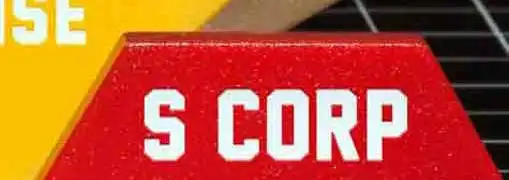S Corp
How To Dissolve An S Corporation
An S corp structure can be a big plus for a business. But when it's time to dissolve it, an S corp can also be a big pain in the . . . you get the picture. Whether you own an S corp now or plan to own one in the future, you will eventually need to know how to dissolve an S corporation.
Eventually, all good things come to an end, including S corporations.
When the day finally arrives, you'll need to have all your ducks in a row – or at least be capable of getting them in a row fast enough to comply with your exit strategy timetable.
Although it's possible to navigate the dissolution process yourself, you're probably better off enlisting the aid of an attorney or accountant. Either way, this is what the process will generally look like, with variations based on the specific requirements in your state of incorporation.
- Schedule a board meeting. The dissolution process begins by calling a formal meeting of the board of directors and introducing a proposal to dissolve the corporation.
- Vote on (and pass) a resolution to dissolve. The board will next have to approve the resolution to dissolve the S corp. Some states require two-thirds approval while others only require a simple majority. Double check the requirements in your state and record the outcome of the vote in formal board minutes.
- File Form 996. Form 996 is the official IRS form that needs to be filed for an S corp dissolution. It can be accessed via the IRS website, but must be filed within 30 days of the board approval to dissolve.
- File state documents. The process for dissolving a corporation with the state varies from one state government to the next. Although you'll need to verify the process for your state, it typically includes Articles of Dissolution and other forms.
- Complete final tax returns. At some point, the corporation will have to complete and file final federal and state tax returns. Even though income and losses flow through to individual shareholders, the corporation is still required to complete a tax return, including one for the year of its dissolution.
- Pay outstanding debts & creditors. Before the corporate assets can be distributed to shareholders, the S corp has to pay off all its creditors and outstanding debts. If cashflow is limited, you may have to liquidate assets to make sure everyone gets paid.
- Distribute assets. One of the last items on your dissolution agenda is the distribution of assets to shareholders. Capital assets should be liquidated and distributed according to the dissolution clause in the corporate bylaws.
Share this article
Additional Resources for Entrepreneurs




Conversation Board
We greatly appreciate any advice you can provide on this topic. Please contribute your insights on this topic so others can benefit.